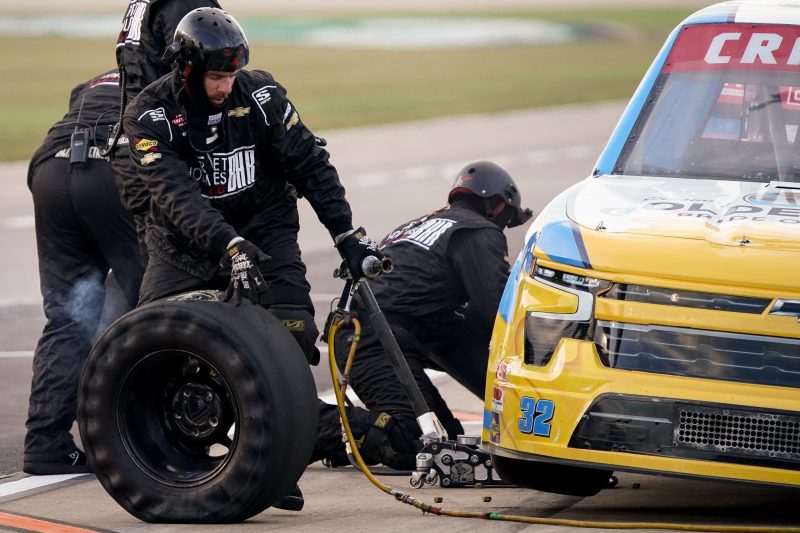It was one of those moments at Talladega where you hold your breath. The kind of split-second chaos that defines superspeedway racing. For Bret Holmes, it was a brutal reminder of how quickly things can go wrong when you’re just inches apart at nearly 200 miles per hour. One minute, you’re jockeying for position, fighting for every inch of asphalt; the next, you’re just a passenger on a ride you never wanted to take.
The pack was tight, a roaring, colorful train of horsepower thundering down the backstretch. Holmes, piloting his truck, was tucked in on the inside line, playing the high-speed chess match that is Talladega. You’re trying to time your run, find a drafting partner, and avoid the inevitable “Big One.” It’s a pressure cooker, and every driver in that pack feels it.
The Accordion Effect at 200 MPH
Up ahead, things started to get squirrely. Layne Riggs in the No. 34 checked up, a sudden deceleration that sent a ripple effect through the inside line. It’s what we call the accordion effect. When one car brakes, even slightly, the car behind has to react even faster, and this pattern continues down the line. At Talladega, that ripple turns into a tidal wave. There’s nowhere to go. You’re boxed in, surrounded by other trucks, with a wall of steel and fiberglass in front of you.
For Holmes, that split-second hesitation from the front of the line was a death sentence for his race. The chain reaction reached him in a flash. There was a bump, a shove, and suddenly his truck was no longer pointing forward. It veered sharply, uncontrollably, to the left. When you’re sideways at that speed, you’re completely at the mercy of physics. The grass on the infield becomes a blur, and your only destination is the unforgiving inside wall.
A Vicious Hit for Bret Holmes
The impact was vicious. The truck slammed into the SAFER barrier with a sickening crunch of metal and carbon fiber. It’s a hit that knocks the wind out of you, a jolt that rattles every bone in your body. Debris scattered across the track as the machine, now a mangled wreck, slid back up toward the racing surface.
It’s a heart-stopping moment for everyone: the fans in the stands, the crews on pit road, and especially the other drivers who have to navigate the chaos. You could feel the collective gasp. A promising run for Bret Holmes was over in an instant, his day ending against that cold, hard wall. It’s the cruel reality of this sport.
A driver can do everything right for 99% of the race, but if they’re in the wrong place at the wrong time, it all comes undone. There was no masterful save to be made, no room to maneuver. It was simply a case of being a victim of circumstance, a casualty of the tight-pack racing that makes Talladega so thrilling and so treacherous.
A Trip To The Infield Care Center
For Holmes, the frustration must have been immense. To have your race end not by your own mistake, but by the dominoes falling in front of you, is one of the toughest pills to swallow in this sport. You climb out of the battered truck, take a deep breath, and watch the rest of the field race on without you. It’s a lonely walk back to the infield care center, replaying those final, frantic seconds in your mind, wondering what, if anything, you could have done differently. In this case, the answer was likely nothing. That’s just Talladega.
